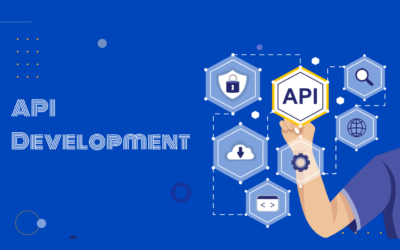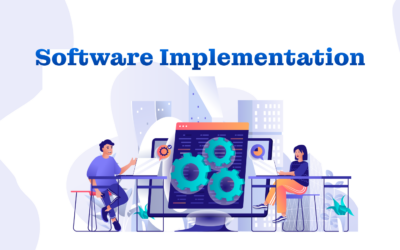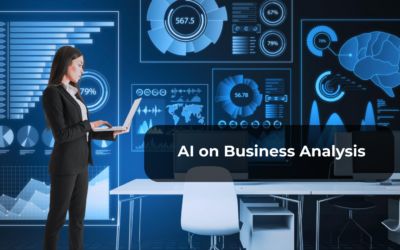Benefits & Advantages of Staff Augmentation for Businesses

Introduction
Staff augmentation has emerged as a valuable solution for businesses looking to enhance their workforce and meet specific project requirements. This practice involves supplementing the existing staff with external resources to address skill gaps, increase productivity, and improve operational efficiency.
What is Staff Augmentation?
Staff augmentation is a business strategy or practice that involves supplementing a company’s existing workforce with external resources on a temporary basis. It is commonly used to address skill gaps, increase productivity, and enhance operational efficiency.
Instead of hiring full-time employees, organizations opt to outsource or contract professionals to work on specific projects or tasks. These external resources, known as augmented staff, work alongside the internal team to provide additional expertise, fill specialized roles, or handle increased workloads.
In the realm of IT services, staff augmentation has gained significant popularity. In this article, we will delve into the benefits of staff augmentation for businesses, specifically focusing on IT staff augmentation and how it helps organizations achieve their goals.
Benefits of Staff Augmentation:
1. Addressing Skill Gaps and Specialized Expertise:
Staff augmentation allows businesses to access a vast pool of talented professionals with specialized skills and expertise. Whether it’s a short-term project or a long-term initiative, organizations can quickly fill skill gaps by outsourcing staff augmentation services. This approach provides access to professionals with specific technical knowledge and experience, ensuring the successful completion of projects that require specialized expertise.
2. Flexible Workforce Management:
Businesses can scale their team up or down based on project requirements, avoiding the need for long-term commitments. Whether it’s seasonal workload fluctuations, project-based requirements, or unforeseen circumstances, staff augmentation allows organizations to adapt their workforce quickly and cost-effectively.
3. Cost-Effectiveness and Operational Efficiency:
Staff augmentation offers cost-effective solutions for businesses. Instead of investing in recruiting, training, and retaining full-time employees, organizations can leverage staff augmentation to access skilled professionals on a temporary basis. This eliminates the overhead costs associated with permanent staff, such as salaries, benefits, and training expenses. Moreover, businesses can allocate resources more efficiently, focusing on core competencies and strategic initiatives.
4. Increased Productivity and Faster Time-to-Market:
By augmenting their workforce, businesses can enhance productivity and accelerate time-to-market for their products and services. Staff augmentation provides access to a skilled and experienced workforce, reducing the time required for recruitment and onboarding. With the additional resources in place, organizations can meet project deadlines, increase output, and deliver results more efficiently, gaining a competitive edge in the market.
5. Flexibility in Staffing Models:
Staff augmentation offers flexibility in choosing the staffing models that best suit the business needs. Organizations can opt for on-site augmentation, where professionals work directly at the client’s location, or remote augmentation, allowing for virtual collaboration. This flexibility enables businesses to leverage global talent, access a diverse skill set, and work with professionals in different time zones, thereby extending their operational capabilities.
6. Access to Technology and Infrastructure:
IT staff augmentation provides businesses with access to cutting-edge technology and infrastructure. External professionals bring their own expertise and resources, allowing organizations to leverage advanced tools and technologies without significant upfront investments. This ensures that businesses stay up to date with the latest advancements and maintain a competitive advantage in the rapidly evolving IT landscape.
7. Knowledge Transfer and Skill Development:
Staff augmentation not only provides immediate access to skilled professionals but also facilitates knowledge transfer and skill development within the organization. By working alongside experienced experts, internal staff members can learn new techniques, acquire industry best practices, and enhance their own skills. This leads to the overall growth of the organization and the development of a competent workforce.
Difference between staff training & staff augmentation:
Staff training and staff augmentation are two distinct approaches to addressing workforce needs within an organization. While both strategies aim to enhance employee capabilities, they differ in their objectives, implementation, and outcomes.
Staff training refers to the process of providing employees with specific knowledge, skills, and competencies to improve their performance in their current roles. It focuses on developing the existing workforce and building their expertise in specific areas. Here are some key aspects of staff training:
- Skill Development: Training programs aim to enhance employees’ skills and knowledge related to their current job responsibilities. It may include technical training, soft skills development, leadership training, or industry-specific certifications.
- Internal Resource Development: Staff training focuses on nurturing internal talent by investing in employees’ growth and development. It promotes loyalty, engagement, and long-term retention within the organization.
- Customized Learning: Training programs are designed to address specific learning needs identified within the organization. They can be customized to align with the organization’s goals, industry requirements, and individual employee development plans.
- Long-Term Investment: Staff training is a long-term investment in employee development. It may require a significant commitment of time, resources, and budget to design and implement effective training initiatives.
Staff augmentation involves supplementing the existing workforce with external resources on a temporary or project basis. It focuses on fulfilling immediate resource gaps, acquiring specialized skills, or managing fluctuating workloads. Here are some key aspects of staff augmentation:
- Temporary Resource Addition: Staff augmentation involves hiring external professionals or contractors to work alongside the existing workforce for a specific period or project. These resources are typically engaged on a temporary or contract basis and are not considered permanent employees.
- Addressing Skill Gaps: Staff augmentation is often used to bridge skill gaps or obtain specialized expertise that may not be available within the organization. It allows businesses to access professionals with specific skills or knowledge required for a particular project or task.
- Flexibility and Scalability: Staff augmentation provides flexibility in managing the workforce. Businesses can quickly scale up or down based on project demands, market conditions, or specific needs. It allows organizations to adapt their workforce to changing requirements without long-term commitments.
- Cost-Effective Solution: Staff augmentation offers a cost-effective alternative to hiring full-time employees. It eliminates recruitment and onboarding costs associated with permanent staff, as external resources are engaged only when needed.
- Project-Based Approach: Staff augmentation is often project-based, focusing on meeting specific project requirements within a defined timeline. External resources are brought in to contribute their expertise and assist in achieving project goals.
Conclusion:
Staff augmentation offers numerous benefits for businesses, particularly in the realm of IT services. By leveraging external resources, organizations can bridge skill gaps, enhance productivity, and achieve operational efficiency. Whether it’s accessing specialized expertise, adapting to changing project requirements or reducing costs, staff augmentation provides a flexible and scalable solution. Staff training is a long-term investment in internal resource development, while staff augmentation offers a flexible and project-based approach to resource management. Both approaches have their unique advantages and can be used strategically based on the organization’s needs and objectives.
Are you looking for any IT Services such as Web design and Development, Mobile App Development, Digital Marketing Services and more? Connect Stridefuture Technology, which helps to meet your requirements.
{StrideFuture Technology, a full-service company specializing in Software Solutions and Consultancy services. We specialize in Personal, Business, IT Services, Web design and Development, Mobile App Development, Digital Marketing Services, and much more you can dream Virtually with us! Reach out for more service at StrideFuture Technology.}









